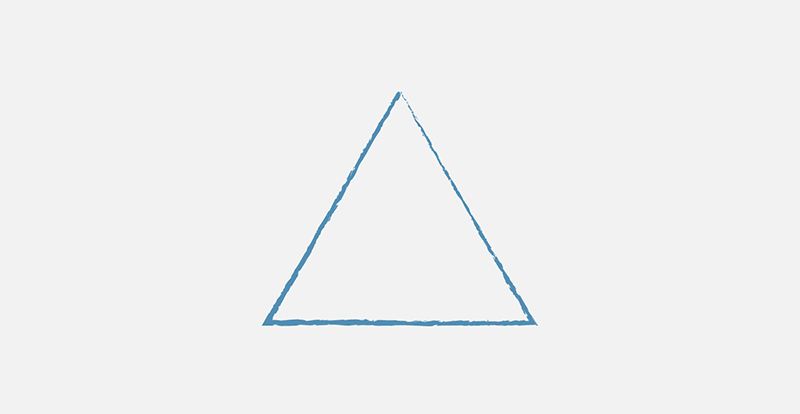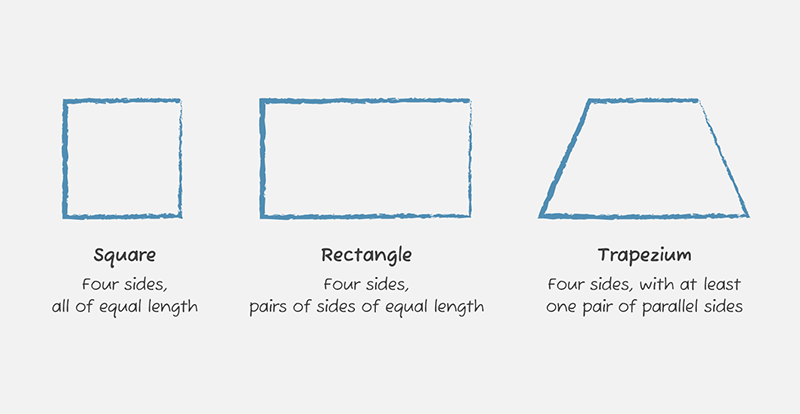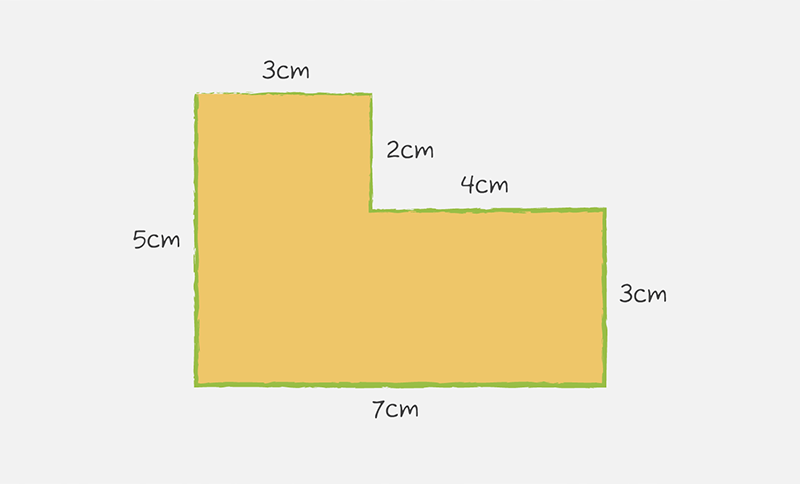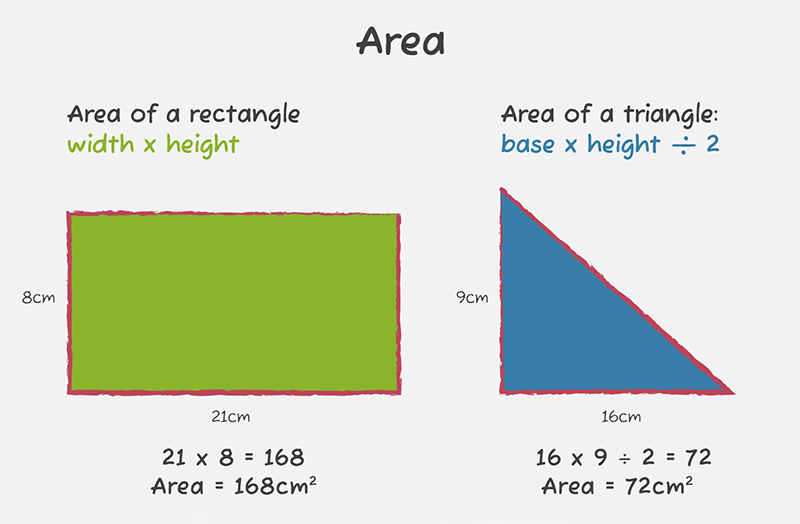Back to library
About this topic: Shapes and Area
Some children become aware of shapes at a very young age, as they look at various objects around them and manipulate such things as blocks while playing. They may be able to name basic shapes, such as a square, a circle or a triangle.
When your child begins school, they learn about the features that define each of these shapes. They learn what is the same, what is different, and more precise language to describe shapes.
Learning how to look at an item's features, describe it, and compare it to other items, is the basis for future maths skills. It also helps children think about life generally: it shows how to follow a logical process to make a decision, and to compare things when making a choice. These skills help children see the world in an organised way.
The properties of shapes and objects
Properties are the features that define a two-dimensional shape (like a square) or a three-dimensional object (like a cube). Throughout school your child will gradually learn words that will help them describe the properties of different shapes and objects more accurately.
For example, they will learn that a triangle is a two-dimensional shape with three straight sides. Usually they will be introduced to this shape as a triangle:

This triangle has three sides that are the same length. At first, children may think that this is the only way that a triangle can look, because this is the shape they begin to learn with.
Gradually, teachers will introduce new properties for shapes, and new words to explain them. Your child will learn that triangles can have sides that are different lengths, or point in different directions, and there are different words to describe all these properties.
For example, here are some different kinds of triangles, and some words to describe their properties:

Categories and classifications
Children establish the relationships between shapes or objects by comparing their properties. Students learn to identify shared properties, and can use these to group the shapes into categories.
For example, a rectangle, a square, and a trapezium (a shape with two parallel sides) can all be put together in the same category of 'shapes that all have four straight sides'.

As your child moves up through the school years, they also come to understand that a shape can fit into many different categories. In other words, a shape can belong to several categories at the same time.
For example, a rectangle belongs to the category of parallelograms (four-sided shapes with opposite sides parallel), as well as trapeziums (four-sided shapes with at least one pair of parallel sides), quadrilaterals (four-sided shapes), and polygons (any shape with three or more sides).
Even if children never work with geometry when they grow up, learning how to categorise (choose a set of properties to group things in) and classify (group things that have the same properties) helps children learn to think in an organised way, which is useful for many life skills.
Transformation
The word transformation is used in maths to mean a change in the position of a shape or object. There are several ways this can happen.
It can be moved up and down or sideways. This is called a translation (slide). It can also be reflected (flipped, like the reflection in a mirror), or rotated (turned).
Your child will be encouraged to experiment with these different movements of shapes and objects, and to recognise that these changes don't change the shape itself. In other words, a triangle still has three sides when it is upside down, so even though it looks different, it is still a triangle.
Symmetry
Your child will also explore the idea of symmetry. If a shape looks unchanged when it is cut in half, we say it is symmetrical. If it looks very different when it is cut in half, we say it is asymmetrical.

Measurement of Perimeter and Area
Measuring the perimeter of a shape
Perimeter is the length of the boundary around a shape.
Adding up the length of all these sides will give you the total perimeter of a shape.
In the example below, adding up the lengths gives you the total:
3 + 2 + 4 + 3 + 7 + 5 = 24 cm.
So the perimeter of this shape is 24cm long.

Measuring the area of a shape
The area of a shape is the amount within a boundary of a shape.
A standard unit of area is the square. In the examples below we've measured the shape in centimetres, so we use the unit of square centimetres (cm2).
We can use the formula height x width to work out the area in this example:
8 x 21 = 168 cm2
You can use different formulas to work out area, depending upon the shape.
For example, if you want to find the area of a triangle, you would use the formula: base x height divided by 2.
In the example below, the area of the triangle works out to be:
16 x 9 ÷ 2 = 72 cm2

Summary
Learning geometric concepts begins in the preschool years with shapes. In the primary and secondary years of school, more complex ideas are introduced and built upon, including area (the space inside a shape) and perimeter (the total length of the sides around a shape).
